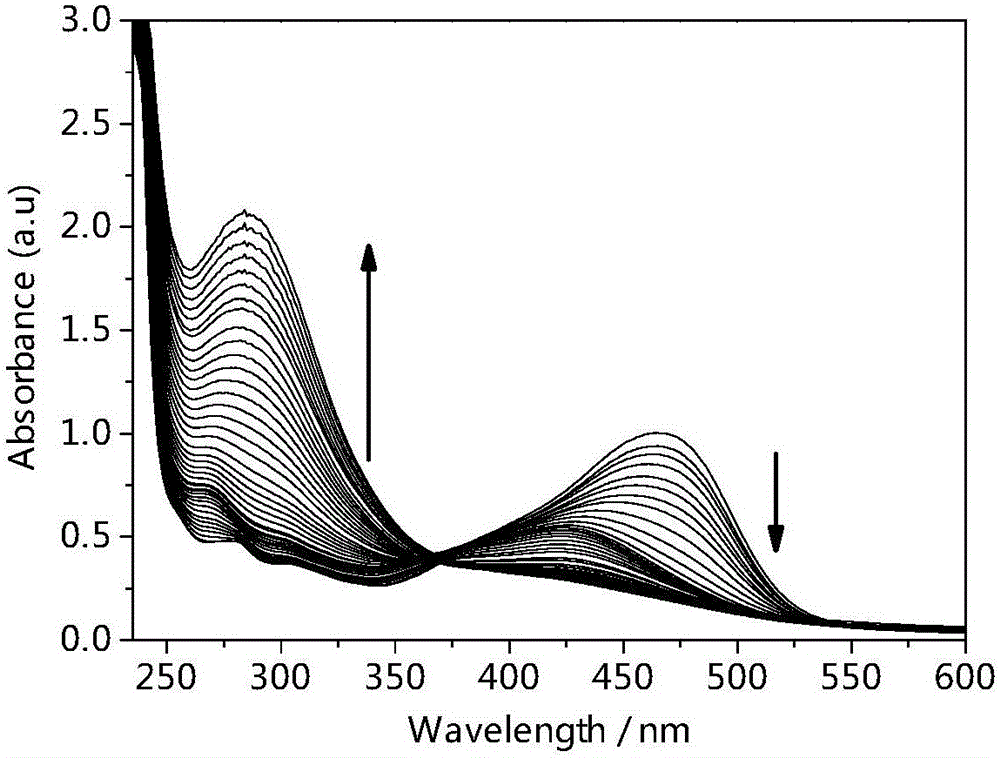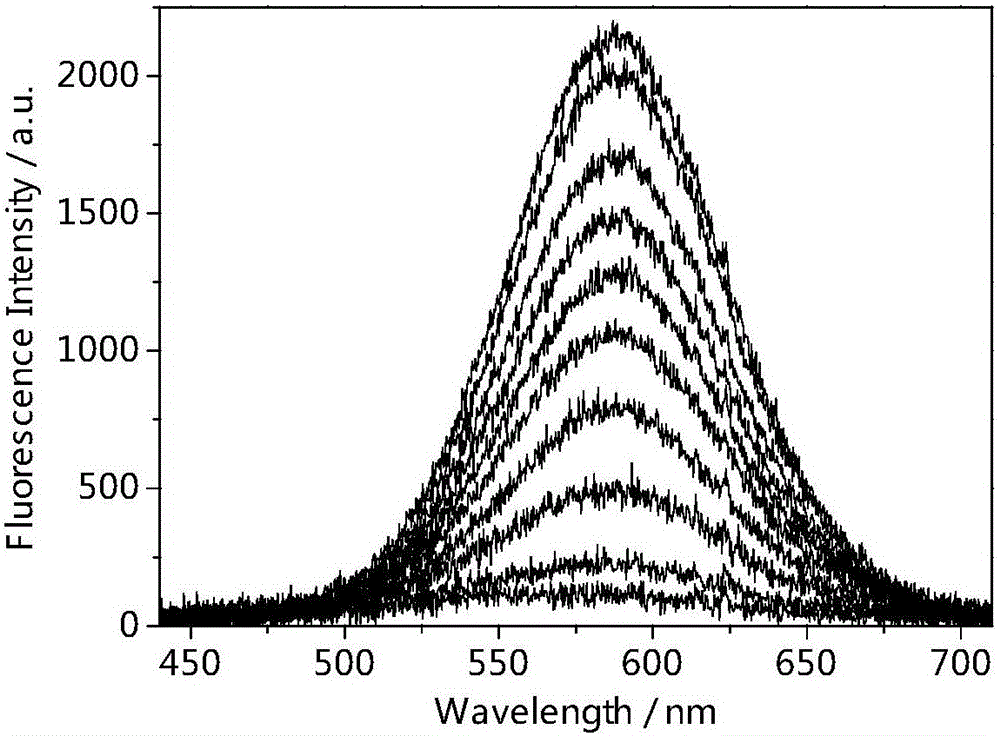Diphenylethene group dual cyano benzene two-photon fluorescence probe for detecting and displaying intracellular Hg ion
A two-photon fluorescence, biscyanobenzene technology, applied in fluorescence/phosphorescence, luminescent materials, thioether preparation, etc., can solve the problems of unsatisfactory detection sensitivity and unusable probes.
- Summary
- Abstract
- Description
- Claims
- Application Information
AI Technical Summary
Problems solved by technology
Method used
Image
Examples
Embodiment 1
[0032] Synthesis of Probe I:
[0033]
[0034] (a) POCl 3 / DMF, 90℃, 2h (95%); (b) Br 2 / CH 2 Cl 2 , nolight, 20℃, 24h (90%); (c) CuCN / DMF, 150℃, 48h (78%); (d) NBS / CCl 4 ,6h(15%); (e)P(OEt) 3 / toluene,120℃,5h(96%); (f)NaH(2equiv) / THF,12h(65%);(g)K 2 CO 3 / MeCN,HS(CH 2 ) 2 OH, 40℃, 12h(86%).)
[0035] (1) Synthesis of intermediate 2
[0036] Dehydrated DMF (30.0g, 411mmol) was added to a 100mL single-necked round-bottomed flask with a drying tube, stirred in an ice-water bath and cooled to 0°C, the drying tube was removed, and a constant pressure feeder containing POCl3 (27.6g, 181.5mmol) was inserted Add POCl3 dropwise with stirring at 0°C, continue the reaction at 0°C for 45 min after the dropwise addition, and then add N,N-dihydroxyethylaniline (10.0 g, 55 mmol) in DMF ( 10.0g, 137mmol) solution, then slowly raised to 110°C and continued to react for 2h, cooled and poured into 0.5L ice water, stirred and added dropwise 1M NaOH solution to adjust the pH to arou...
Embodiment 2
[0050] Probe I selectivity for mercury ions:
[0051] The selectivity to mercury ions was evaluated using compound I synthesized above. Probe molecule I (probe concentration is ) were added to the buffer solution of different metal ions (the ion concentration is 20mmol / L), the ratio of the difference between the single-photon fluorescence intensity of the probe molecule solution without metal ions and the single-photon fluorescence intensity of different ion solutions to the former That is, the percentage quenching rate of the ion-to-probe molecule fluorescence intensity, which is used to judge the selectivity of the probe molecule to the ion. The single- and two-photon excitation wavelengths of the probe are 467nm and 810nm, respectively, and the emission wavelength is 588nm. The test results are shown in Figure 6 middle. It can be seen from the figure that the probe I has a high selectivity to mercury ions, and the addition of mercury ions produces a large fluorescenc...
Embodiment 3
[0053] Insensitivity of Probe I to pH:
[0054] The compound I synthesized above was used to evaluate the response to pH, and the probe molecule (probe concentration of ) respectively add ions with an ion concentration of In the aqueous solution of 20mmol / L and 0, adjust the pH to about 2.0. After measuring the fluorescence intensity, add lye, slowly increase the pH, record the corresponding fluorescence intensity change, and plot the pH change with the fluorescence intensity change. The test results are shown in Figure 7 middle. It can be seen from the figure that within the range of pH 4.5-13, the pH change basically has no effect on the fluorescence emission. Therefore, probe I can be used for the detection of intracellular mercury ions in a large pH range.
PUM
| Property | Measurement | Unit |
|---|---|---|
| melting point | aaaaa | aaaaa |
Abstract
Description
Claims
Application Information
 Login to View More
Login to View More - R&D
- Intellectual Property
- Life Sciences
- Materials
- Tech Scout
- Unparalleled Data Quality
- Higher Quality Content
- 60% Fewer Hallucinations
Browse by: Latest US Patents, China's latest patents, Technical Efficacy Thesaurus, Application Domain, Technology Topic, Popular Technical Reports.
© 2025 PatSnap. All rights reserved.Legal|Privacy policy|Modern Slavery Act Transparency Statement|Sitemap|About US| Contact US: help@patsnap.com



